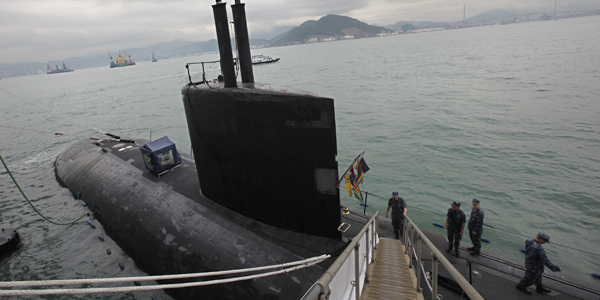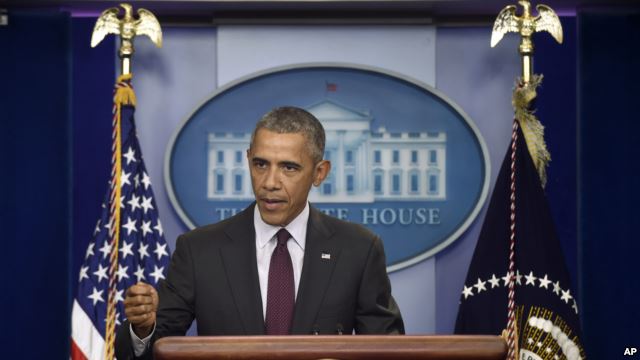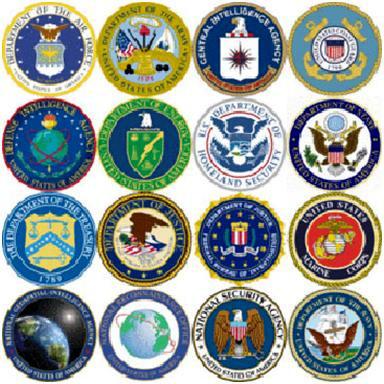
The absence of a clear, mutually understood policy on when we use nuclear weapons makes conflict — though it remains extremely unlikely — more likely to escalate into nuclear war more quickly than anyone can stop it.

After 10 years of close but unproductive talks, the U.S. and China still fail to understand one another’s nuclear weapons policies, according to a disturbing report by Global Security Newswire and the Nuclear Threat Initiative. In other words, neither the U.S. nor China knows when the other will or will not use a nuclear weapon against the other. That’s not due to hostility, secrecy, or deliberate foreign policy — it’s a combination of mistrust between individual negotiators and poor communication; at times, something as simple as a shoddy translation has prevented the two major powers from coming together. Though nuclear war between the U.S. and China is still extremely unlikely, because the two countries do not fully understand when the other will and will not deploy nuclear weapons, the odds of starting an accidental nuclear conflict are much higher.
Neither the U.S. nor China has any interest in any kind of war with one other, nuclear or non-nuclear. The greater risk is an accident. Here’s how it would happen. First, an unforeseen event that sparks a small conflict or threat of conflict. Second, a rapid escalation that moves too fast for either side to defuse. And, third, a mutual misunderstanding of one another’s intentions.
This three-part process can move so quickly that the best way to avert a nuclear war is for both sides to have absolutely confidence that they understand when the other will and will not use a nuclear weapon. Without this, U.S. and Chinese policy-makers would have to guess — perhaps with only a few minutes — if and when the other side would go nuclear. This is especially scary because both sides have good reason to err on the side of assuming nuclear war. If you think there’s a 50-50 chance that someone is about to lob a nuclear bomb at you, your incentive is to launch a preventative strike, just to be safe. This is especially true because you know the other side is thinking the exact same thing. In fact, even if you think the other side probably won’t launch an ICBM your way, they actually might if they fear that you’re misreading their intentions or if they fear that you might over-react; this means they have a greater incentive to launch a preemptive strike, which means that you have a greater incentive to launch a preemptive strike, in turn raising their incentives, and on and on until one tiny kernel of doubt can lead to a full-fledged war that nobody wants.
The U.S. and the Soviet Union faced similar problems, with one important difference: speed. During the first decades of the Cold War, nuclear bombs had to be delivered by sluggish bombers that could take hours to reach their targets and be recalled at any time. Escalation was much slower and the risks of it spiraling out of control were much lower. By the time that both countries developed the ICBMs that made global annihilation something that could happen within a matter of minutes, they’d also had a generation to sort out an extremely clear understanding of one another’s nuclear policies. But the U.S. and China have no such luxury — we inherited a world where total mutual destruction can happen as quickly as the time it takes to turn a key and push a button.
The U.S. has the world’s second-largest nuclear arsenal with around 5,000 warheads (first-ranked Russia has more warheads but less capability for flinging them around the globe); China has only about 200, so the danger of accidental war would seem to disproportionately threaten China. But the greatest risk is probably to the states on China’s periphery. The borders of East Asia are still not entirely settled; there are a number of small, disputed territories, many of them bordering China. But the biggest potential conflict points are on water: disputed naval borders, disputed islands, disputed shipping lanes, and disputed underwater energy reserves. These regional disputes have already led to a handful of small-scale naval skirmishes and diplomatic stand-offs. It’s not difficult to foresee one of them spiraling out of control. But what if the country squaring off with China happens to have a defense treaty with the U.S.?
There’s a near-infinite number of small-scale conflicts that could come up between the U.S. and China, and though none of them should escalate any higher than a few tough words between diplomats, it’s the unpredictable events that are the most dangerous. In 1983 alone, the U.S. and Soviet Union almost went to war twice over bizarre and unforeseeable events. In September, the Soviet Union shot down a Korean airliner it mistook for a spy plane; first Soviet officials feared the U.S. had manufactured the incident as an excuse to start a war, then they refused to admit their error, nearly pushing the U.S. to actually start war. Two months later, Soviet spies misread an elaborate U.S. wargame (which the U.S. had unwisely kept secret) as preparations for an unannounced nuclear hit on Moscow, nearly leading them to launch a preemptive strike. In both cases, one of the things that ultimately diverted disaster was the fact that both sides clearly understood the others’ red lines — as long as they didn’t cross them, they could remain confident there would be no nuclear war.
But the U.S. and China have not yet clarified their red lines for nuclear strikes. The kinds of bizarre, freak accidents that the U.S. and Soviet Union barely survived in 1983 might well bring today’s two Pacific powers into conflict — unless, of course, they can clarify their rules. Of the many ways that the U.S. and China could stumble into the nightmare scenario that neither wants, here are five of the most likely. Any one of these appears to be extremely unlikely in today’s world. But that — like the Soviet mishaps of the 1980s — is exactly what makes them so dangerous.
 (1) China or the Philippines seize a disputed island. Many of these islands are resource rich, important to controlling the South China Sea (one of the world’s most important shipping lanes), or both. It’s also not clear who owns which. The U.S. has worked hard to create dispute-resolution mechanisms so that the Pacific rim nations can peacefully resolve conflicts over disputed islands. But it’s always possible that confusion, greed, or domestic politics could drive one of these three countries to act rashly. There’s an off chance that could lead to a naval skirmish, then maybe even a troop deployment. China, which has one of the world’s largest militaries, might be tempted to use overwhelming force to quickly and decisively end such a dispute. This might lead the Philippines to act disproportionately aggressive. If the two countries escalate rapidly and unpredictably, the Philippines could remind the U.S. about their mutual defense treaty. And that’s how the threat of a Sino-Filipino war could become the threat of a Sino-American war.
(1) China or the Philippines seize a disputed island. Many of these islands are resource rich, important to controlling the South China Sea (one of the world’s most important shipping lanes), or both. It’s also not clear who owns which. The U.S. has worked hard to create dispute-resolution mechanisms so that the Pacific rim nations can peacefully resolve conflicts over disputed islands. But it’s always possible that confusion, greed, or domestic politics could drive one of these three countries to act rashly. There’s an off chance that could lead to a naval skirmish, then maybe even a troop deployment. China, which has one of the world’s largest militaries, might be tempted to use overwhelming force to quickly and decisively end such a dispute. This might lead the Philippines to act disproportionately aggressive. If the two countries escalate rapidly and unpredictably, the Philippines could remind the U.S. about their mutual defense treaty. And that’s how the threat of a Sino-Filipino war could become the threat of a Sino-American war.China-watchers may have noticed something missing from this list: a Chinese invasion of Taiwan. It’s possible though unlikely this could happen, and just as possible (though even less likely) that it could happen and it could escalate to the point of drawing in U.S. involvement. But this probably poses the least risk of escalating into nuclear conflict precisely because the U.S. and China have spent so much time discussing it and have achieved such mutual clarity on the matter. The U.S. knows exactly where China and Taiwan stands; China knows exactly where Taiwan and the U.S. stand. Even if a Chinese invasion ever does happen, there’s enough mutual understanding that both sides will have a good idea how to avoid unwanted escalation. And that’s exactly what the U.S. and China need more of if they want to prevent nuclear war: clarity, understanding, and if not trust in each other than at least trust in each other’s incentives and intentions. In the coming decades, one of the above five incidents may very well happen. Where it leads will depend a great deal on what kind of groundwork the U.S. and China can lay now.
Souce: The Atlantic























